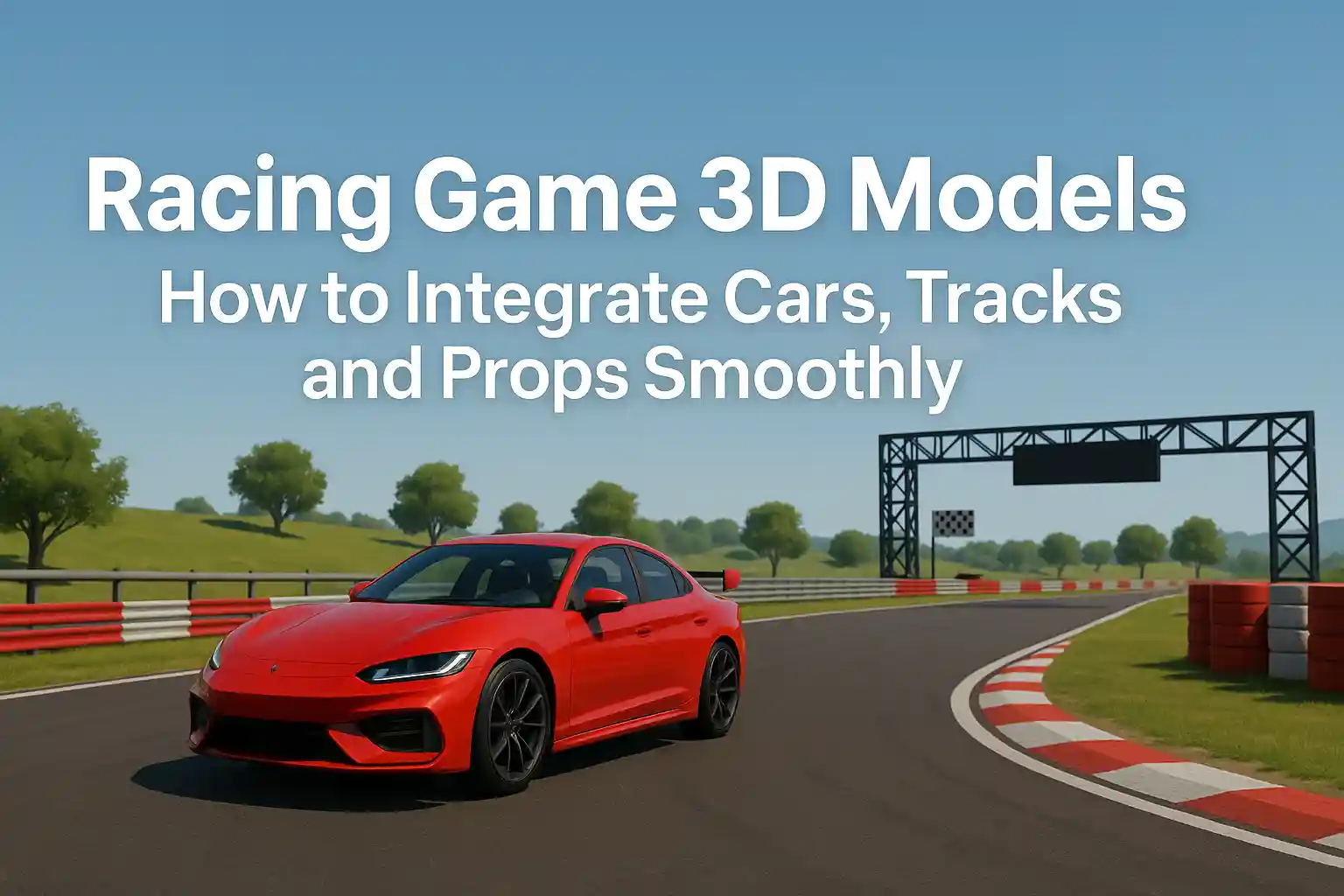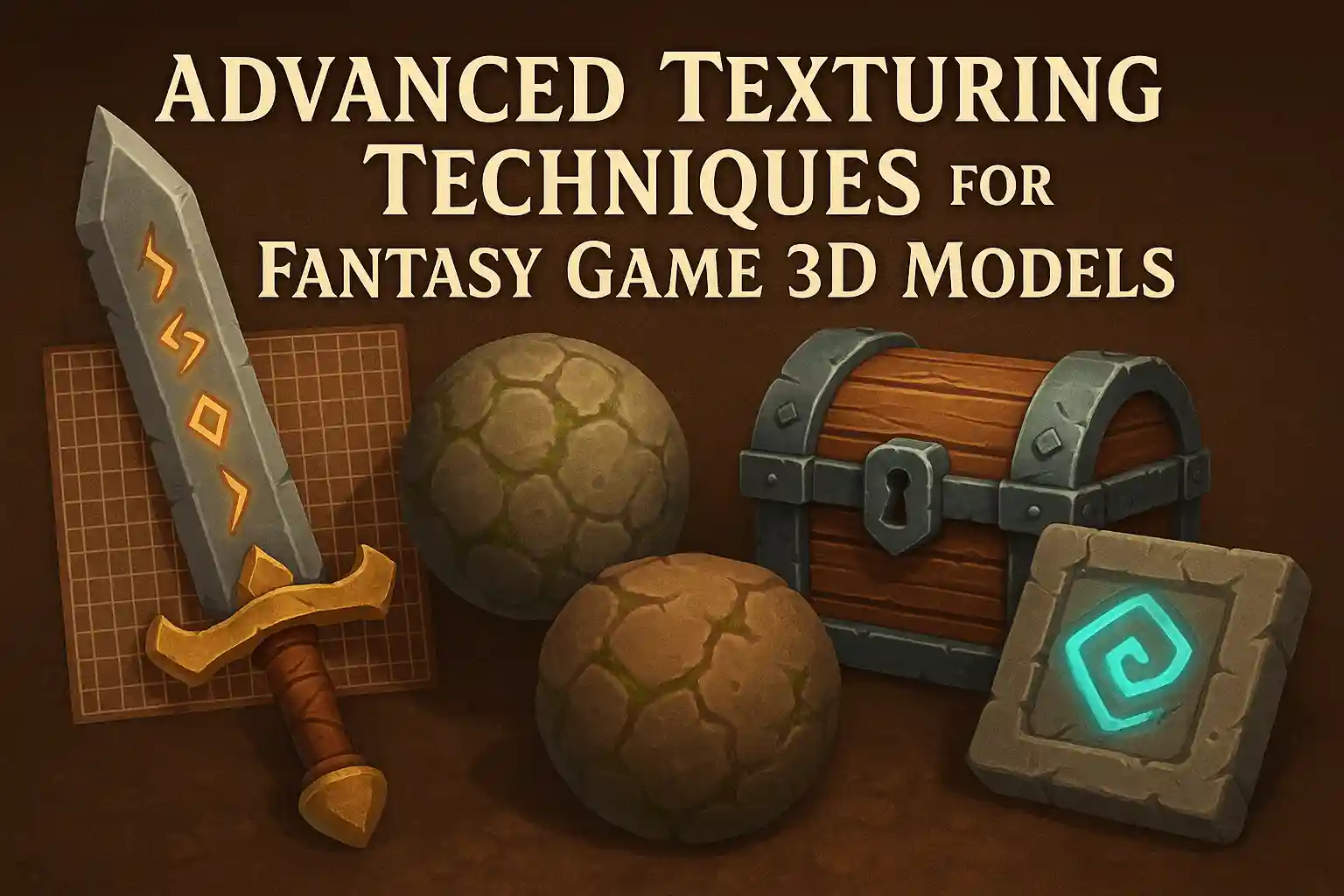Racing Game 3D Models: How to Integrate Cars, Tracks, and Props Smoothly
by Animatics Asset Store in Blog on November 24, 2025Creating a racing game involves more than just putting a fast car on a straight line. When working with racing game 3D models, you’ll want a full ecosystem: cars, tracks, and props—all working together seamlessly. This article walks you through how to integrate these elements in a way that feels natural, performs well, and gives your players a satisfying ride.
Why Integration Matters
When cars slide, bump into props, or zoom down the track, everything needs to feel like part of one world. If your racing game 3D models are disconnected, say the car model uses high-poly details but the track and props are low-poly and mismatched, the player will sense something off.
Integration means:
- visual consistency (materials, lighting, scale)
- performance harmony (poly counts, draw calls, LODs)
- functional interaction (cars collide with props, props on track respond)
Having cohesive models improves immersion. It also makes your game easier to maintain: if all your assets share similar scale, pivot points, naming conventions, you avoid a lot of weird bugs.
Planning Your Asset Pipeline
Choose a style and stick with it
Before you import anything, decide on your aesthetic: realistic, semi-realistic, stylized, low-poly, etc. Then ensure your cars, tracks, and props match. For instance, if your cars have realistic metal shaders and reflections, but your track props are flat and cartoon-shaded, you’ll get a visual mismatch.
Define scale and unit conventions
Pick a unit system (e.g., 1 unit = 1 meter) and stick to it across all your racing game 3D models. Track width, car size, prop size—all must use the same base unit. That ensures collisions, camera distances, and physics feel right.
Poly count, LOD, optimization
A modern racing scene might have many cars, terrain, props, audience stands, etc. Free 3D vehicle model sources list vehicles with tens of thousands of polygons. Free3D If your car is 200k polys but your props are 2k, you’ll have imbalance. Give each asset category budgets: cars get higher detail, track base geometry moderate, props lower detail with LODs.
Naming, hierarchy, pivot points
- Car root pivot = centre of mass (for physics)
- Track segments named logically (Track_Straight01, Track_Curve90_Right02)
- Props grouped by type (Barrier, Billboard, LightPole)
This labeling helps when scripting, instancing, and batching.
Integrating Cars with the Track
Setup the track model
Your track should be one or more segments that can be combined or reused. Use spline tools or modular pieces (straight, curve, uphill, downhill). For example a free track model pack includes “… over 70 objects/tiles” for road, borders, flags, bridges. Place static colliders along the track. Ensure proper normals and smooth transitions between segments.
Import the car models
Make sure your cars are oriented correctly (e.g., forward = +Z, up = +Y). Materials must match the lighting model used for the track. If the track uses HDRP and cars use standard, you’ll see mismatch. A good asset baseline: the free “ARCADE: FREE Racing Car” for Unity includes compatibility for Built-in and URP pipelines.
Positioning, scaling, and alignment
Place the car on the track start line. Check wheels sit correctly on the surface. Use a raycast or sample the track mesh height. If the car hovers or penetrates the surface, the immersion breaks. Adjust pivot and bounding boxes accordingly.
Physics and collision
Use wheel colliders or physics bodies set up in your engine of choice. Make sure the bounding box or collider of the car doesn’t intersect the track mesh upon spawn. Use layer masks so the car collides with props and barriers but not invisible helper objects.
Placing Props for Speed and Realism
Props for performance
Props like street lights, stands, barriers, trees add life to the scene. But too many high-poly props can kill performance. Balance by using low poly versions for distant props and higher detail for near props. Also combine props into larger mesh batches where possible to reduce draw calls.
Props for interaction
Some props should interact: a barrier might deform when hit; a billboard might sway. But others are purely decorative. In your design, tag interactive props separately so you can handle collisions and events only for those when necessary. This reduces overhead.
Consistent lighting and materials
If your track uses baked global illumination, ensure props share the same light map UVs or are added to the light-baking process. If the cars use real-time lighting while props are static, ensure shadowing and reflections coordinate. A consistent material workflow across cars, tracks, and props makes the world feel unified.
Placement techniques
- Use roadside props at regular intervals: every X meters place a pair of trees/lamps to give speed cues.
- Place unique props at key moments (jump, turn, finish line) to signal importance.
- Avoid symmetry in props placement; slightly randomize scale or rotation to feel natural.
Optimisation and Smooth Integration
Use Level of Detail (LOD)
Set up LODs for cars, props, and even parts of the track environment. For example, a prop tree might have full details close to the camera, then use a billboard version further away. This helps maintain frame rates.
Cull unseen objects
Use frustum culling and occlusion culling so objects outside view aren’t rendering. Especially for racing where peripheral vision is key, unseen props still cost performance.
Combine meshes where appropriate
For static props that don’t move, combine into a single mesh to reduce draw calls. Be mindful of dynamic objects (cars, animated props) which need to remain separate.
Bake lighting, shadows, and reflections
For static props and track, bake the lighting and ambient occlusion to reduce real-time cost. For cars which move, you’ll likely need real-time lighting or reflective probes. Keep the searchlight consistent.
Workflow Example
Here’s a suggested workflow you could follow:
- Import modular track pieces. Align them into a full circuit.
- Import car models, scale to match environment. Check wheels, dimensions, pivot.
- Place static props along track: barriers, lamp posts, crowd stands.
- Configure colliders: track ground, props that affect gameplay (barrier), car collider.
- Set up camera path or player camera behind car. Verify no clipping with props or track walls.
- Add lighting: skybox, directional light, baked GI for track/props. Real-time lighting for car.
- Profile performance: poly count, draw calls, frame rate. Swap LODs or cull accordingly.
- Playtest: drive car around track, ensure props don’t bounce, car doesn’t float, collisions calm. Adjust as needed.
Best Free Source for 3D Game Assets
One often overlooked resource is the Animatics Asset Store. They offer free rigged 3D models for Unity & Unreal, which is useful if you’re creating a racing game and need solid starting assets. animaticsassetstore.com
While many asset stores require payment or license fees, Animatics offers high-quality models that can jump-start your project. They help you avoid reinventing wheels, letting you focus more on integration and gameplay rather than modelling every car, track, or prop from scratch. That said, always check licensing if you plan to commercialise.
Common Pitfalls and How to Avoid Them
- Mismatch of styles: A hyper-realistic car in a cartoon track will look off. Keep everything within the same design language.
- Scale errors: Cars too big/small compared to track. Use consistent units from day one.
- Performance drop due to props: Too many high-poly props or no LOD usage. Use batching, culling.
- Inconsistent collisions: Car penetrates props, hovers above track. Check pivots, colliders, physics materials.
- Lighting inconsistencies: Cars shiny when track is flat matte. Use same light model and material setups.
- Asset licensing issues: Using a “free” model for commercial without verifying license. Always check terms.
Summary
Integrating cars, tracks, and props smoothly in a racing game means planning ahead, keeping a consistent style, optimising intelligently, and using quality assets where possible. With the right workflow your racing game 3D models will not only look good but perform well and feel cohesive.
Start with a modular track, bring in your car models, place props thoughtfully, and optimise with LODs, culling and proper lighting. Don’t hesitate to use reputable free asset sources like Animatics Asset Store to get momentum.
Your race scene will come alive. Players will feel the speed, the terrain, the environment as one. That’s the magic of smooth integration.






